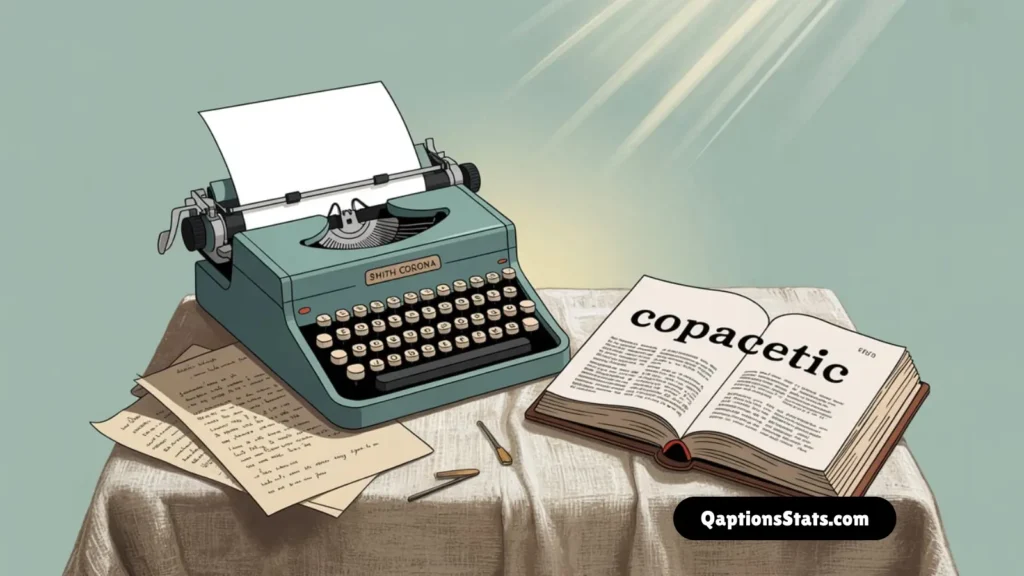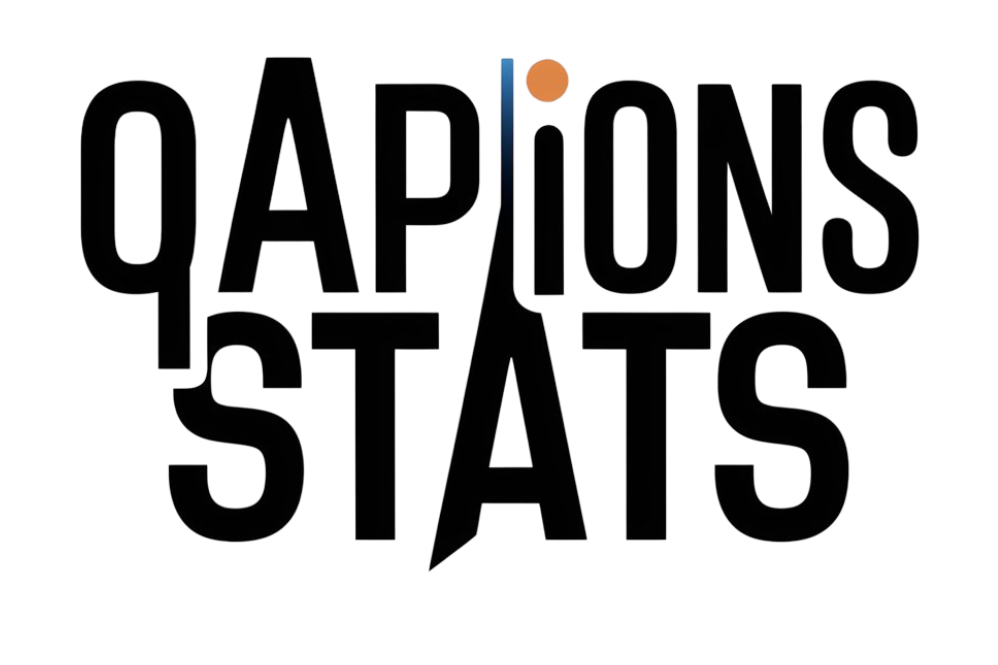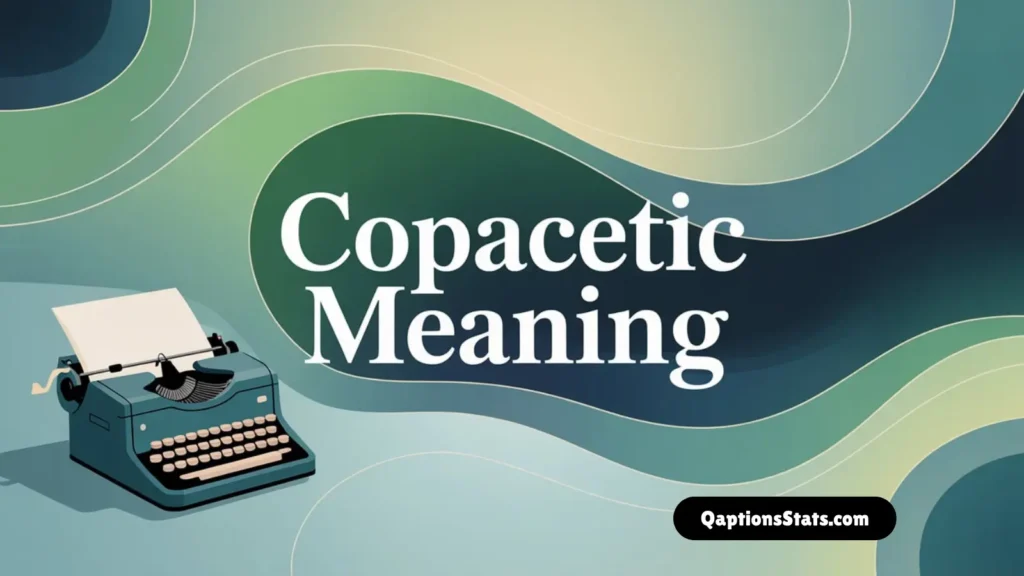Have you stumbled across the phrase “everything’s copacetic” and wondered what it truly means? The term has a calm, confident ring to it—but what is the real copacetic meaning in today’s language? In this 2025 guide, we’ll break it all down—exploring the word’s origins, how to use it correctly, what tone it conveys, and what alternatives fit better depending on the situation.
Whether you’re writing a professional email or chatting with friends, understanding copacetic will give your vocabulary a smooth, reassuring edge.
Origin of Copacetic and History

Where does “copacetic” come from? The exact origin remains uncertain, but linguists have traced it back to American English in the early 1900s. One theory links it to African‑American vernacular, possibly from phrases like “everything’s copasetic.” Another school of thought suggests it may have Yiddish or Creole roots.
By the 1920s, “copacetic” was well-entrenched in American slang. Jazz musicians and writers popularized it, and it gradually spread into everyday use. Today, it’s recognized as a slightly retro but perfectly serviceable adjective conveying that everything is fine, agreeable, or satisfactory.
See Also: Skibidi Toilet Meaning
Core Definition
At its core, “copacetic” means:
- Everything is in good order
- All is well or satisfactory
- Nothing amiss; all is acceptable
Let’s put that simply: if someone says, “We’re copacetic,” they mean “we’re fine” or “everything’s good.”
Usage in Sentences
Here are a few straightforward ways to use it:
- “After reviewing the proposal, the client said everything looked copacetic.”
- “Don’t worry—your order is copacetic and will ship today.”
- “All signals are copacetic—launch when ready.”
Notice how it signals reassurance and calm practicality.
Polite, Professional, and Casual Alternatives
Depending on context, tone, and audience, you might prefer other phrases. Here are three categories with clear examples.
A. Polite / Formal
- Everything appears satisfactory.
- All seems to be in order.
- All is well, thank you.
B. Professional
- Everything checks out.
- All systems are functional.
- All is in compliance.
C. Casual / Friendly
- All good!
- Everything’s cool.
- It’s all gravy.
Choosing the Right Variant for Tone and Context
Polite
Use polite options when writing for a respected audience—senior staff, formal letters, or dignified emails.
Example: “I’ve reviewed the draft and everything appears satisfactory.”
Professional
In business contexts and meetings, aim for clarity and precision.
Example: “Systems check complete—everything’s functional.”
Casual
With friends or peers, feel free to relax.
Example: “Hey team, we’re all good—looks copacetic.
7. 11 Strong Examples of Usage
Each example shows how tone and context shape phrasing:
- “I’ve double‑checked the figures; everything is copacetic.”
– Professional reassurance in a meeting. - “Our schedules aligned perfectly—copacetic and ready to go.”
– Casual conversation with a peer. - “May I confirm that the documentation is copacetic before we proceed?”
– Polite and formal email. - “During the inspection, they noted that operations were copacetic.”
– Professional report summary. - “Just touched base with the client: they say it’s all copacetic.”
– Conversational update at work. - “Everything’s copacetic—no need to stress!”
– Friendly message or text. - “The software update ran smoothly; system status remains copacetic.”
– Technical/professional context. - “With all these deadlines, it’s a wonder we’re still copacetic.”
– Light‑hearted, casual remark. - “All’s copacetic on my end—let’s move forward.”
– Formal yet approachable. - “We passed the audit, so finances are copacetic.”
– Business‑like reassurance. - “Client call went well; everything’s copacetic now.”
– Summary for colleagues or boss.
Read Also: Anjin Meaning: Its Origins, Usage, and Related Concepts updated 2025
Nuances and Subtle Differences
Though “copacetic” feels breezy, its shade of meaning is subtly different across contexts.
- In formal statements, it hints at confident reassurance.
- In professional communication, it signals completion or approval.
- In casual talk, it adds a friendly, colloquial flair.
- It’s more upbeat than “fine,” more polished than “okay.”
Common Mistakes and Misconceptions
- Overusing it – Too many “copacetic”s sound quirky or odd.
- Mismatched tone – It can feel awkward in ultra‑formal legal texts.
- Spelling errors – “Copacetic” is correct; avoid spelling like “copasetic.”
Style Tips to Sound Natural
- Match tone: Pair “copacetic” with similar register words—avoid harsh slang nearby.
- Balance formulas: Don’t follow it immediately with “okay” or “fine”—pick one.
- Test for clarity: If the reader won’t know “copacetic,” use a synonym.
- Write lean: One well‑placed “copacetic” can add character—too many dilutes the effect.
Conclusion
“Copacetic” is a delightful addition to your vocabulary—a word that conveys ease, assurance, and a touch of personality. Whether you’re writing formally or chatting casually, knowing when and how to use it (and when to opt for an alternative) gives you linguistic finesse.
Use it sparingly, match your tone, and let it elevate your expression. Next time you declare everything is “copacetic,” know that you’re using a bit of rich Americana with style and purpose.



